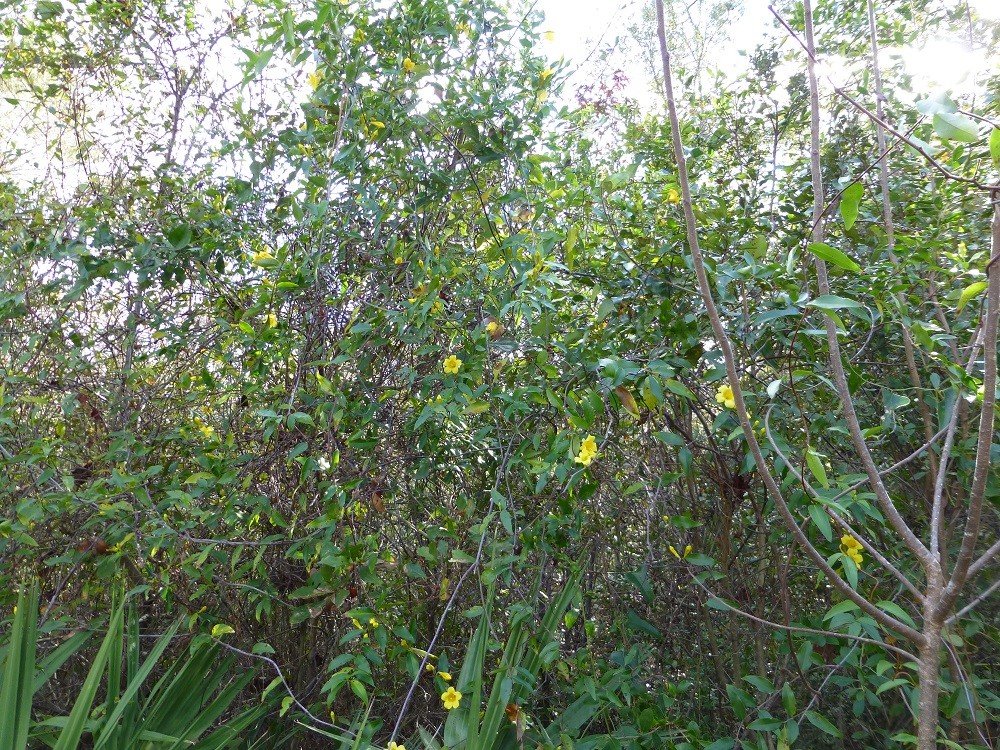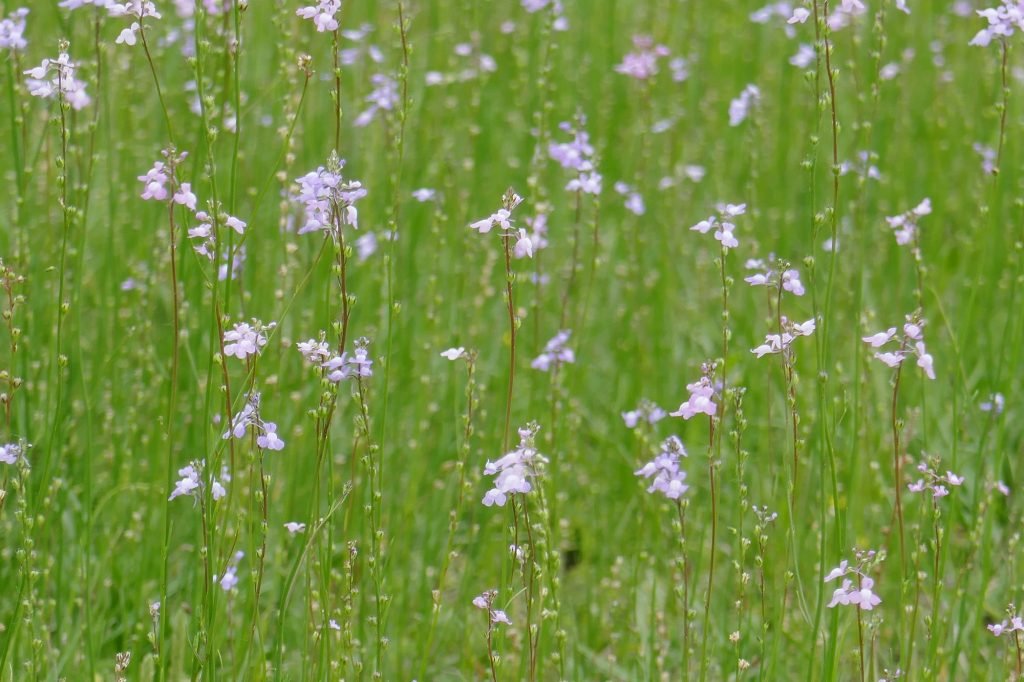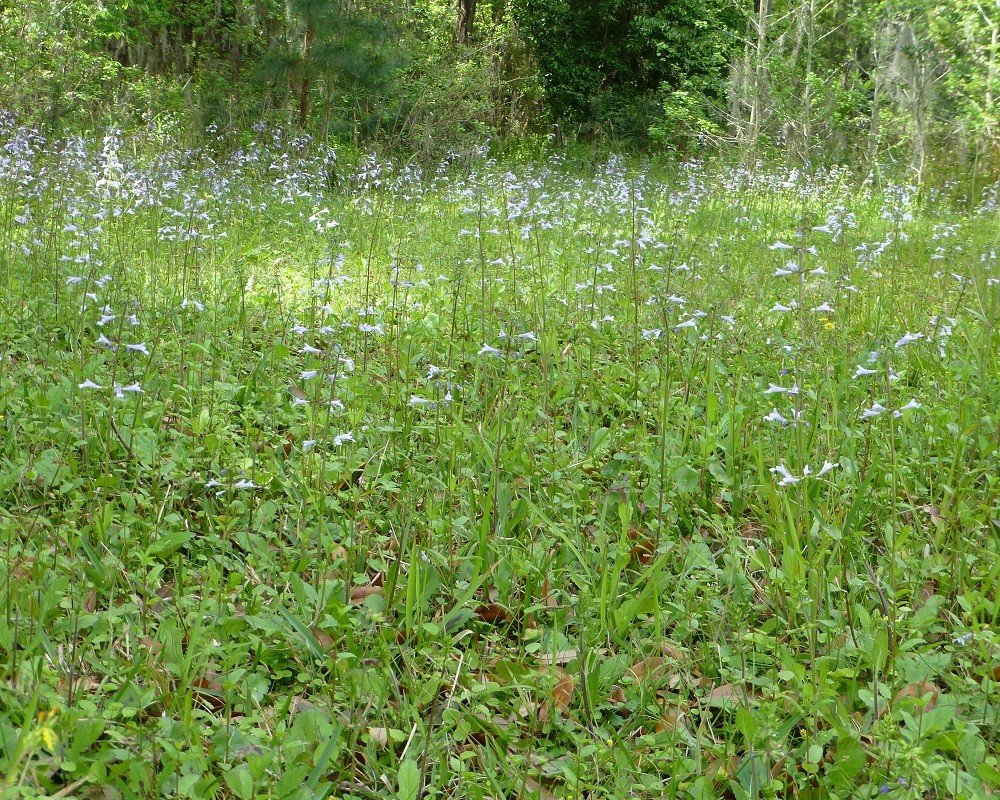Late Winter Blooming Natives
About mid-February, blooms usually start appearing along roadsides and I am always asked what plants they are. Well, here is a list of some of the natives that bloom during late winter. They are letting us know that spring is just around the corner.
Late Winter Blooming Trees Native to Central Florida

Eastern Redbud (Cercis canadensis)
Eastern redbud is a small deciduous tree reaching a mature height of 24 feet. Showy, purplish colored, flowers appear in the spring before the leaves emerge. The leaves are alternate, simple, entire with cordate bases (which give them a heart shaped appearance). The fruit is a flattened, oblong, pod. The seeds are eaten by some wildlife. It is found in woodlands and along roadsides. It grows in full sun to part shade with average moisture.

Dogwood (Cornus florida)
Dogwood is a deciduous tree reaching a mature height of 40 feet. Large white flowers appear in the spring – the white part of the flower is actually the leaf bract. The leaves are opposite, entire, and broadly elliptic. The seeds are eaten by songbirds. It is found in woodlands and roadsides. It grows in part shade with average to moist soils.

Flatwoods Plum (Prunus umbellata)
Flatwoods plum is a small deciduous, single trunked, tree reaching 20 feet in height at maturity. The flowers are white, five petaled and generally emerge before the leaves. The leaves are alternate, simple, oval to elliptic with serrate margins. The small (red to purple) plums are eaten by a variety of wildlife. It is found in all of Florida in hammocks, pinelands, and coastal scrub. It grows in part shade to full sun with average moisture.

Sparkleberry (Vaccinium arboreum)
Sparkleberry is a deciduous tree reaching 27 feet in height at maturity. Its small leaves are simple, alternate, round to oval, with mostly entire margins. The small fragrant, urn shaped, flowers appear in the spring. The flowers are an important nectar source for butterflies and other insects. The fruit is a black edible berry, and is used to make jellies and jams. The berries are eaten by a variety of wildlife. It is found in upland mixed forests, oak scrub, sandhills and coastal hammocks.
Late Winter Blooming Shrubs Native to Central Florida

Southern Dewberry (Rubus trivialis)
Southern dewberry is a trailing, sprawling, thorny, shrub with a habit more like a vine than a shrub. The flowers are white with a pink tint and appear in the spring, and provide nectar for butterflies and other insects. The leaves are alternate, compound, with three to five leaflets, with doubly toothed margins. The berries are prized by wildlife and make fantastic jams and jellies. It is found in moist to dry woodlands, pine flatwoods & fence rows. It grows in full sun to part shade with average to moist soils.

Highbush Blueberry (Vaccinium corymbosum)
Highbush blueberry is a large deciduous shrub reaching 9 feet at maturity. White or pinkish, urn-shaped, flowers appear in late winter and spring. The flowers are an important nectar source for butterflies and other insects. The leaves are alternate, simple, elliptic to lanceolate, with finely toothed margins. The berries are black when mature and are eaten by a variety of wildlife. It is found in pinelands, swamps and bayheads.

Walter's Viburnum (Viburnum obovata)
Walter’s viburnum is an evergreen shrub reaching 18 feet in height at maturity. The white flowers, in flat topped clusters, appear in the spring. The leaves are opposite, simple, with entire to minutely toothed margins (toward the apices). The lower leaf surfaces are covered with small brown dots. The fruit is a small black, oval, drupe. Songbirds eat the fruit and the foliage provides good nesting cover. It is found in flatwoods, stream banks, and hammocks. It grows in part-shade to full sun with average to moist soils.
Late Winter Blooming Vines Native to Central Florida

Carolina Jessamine (Gelsemium sempervirens)
Carolina jessamine) is an evergreen vine that climbs high into the trees. The leaves are opposite, simple, entire and lanceolate. Yellow flowers are tubular with flared petals, and appear in late winter and spring. The flowers are poisonous to pollinators. It is found in woodlands, pine flatwoods, and disturbed sites.
Late Winter Blooming Wildflowers Native to Central Florida

Blue Toadflax (Linaria canadensis)
Blue toadflax is a perennial wildflower that tends to go unnoticed. The blue & white flowers are very small and born along the tall slender stems. Small linear leaves may be found on the lower portion of the stem, but the majority of the leaves are basal. It grows to about 20 inches in height. The buckeye butterfly uses this as a larval food along with other members of the Scrophulariaceae (snapdragon) family. It is found in disturbed sites, roadsides and fields.

Sky-blue Lupine (Lupinus diffusus)
Sky-blue lupine is a perennial wildflower with (as the name implies) sky-blue colored flowers. The large pea-shaped blooms appear in early spring in terminal spikes. The leaves are ovate to elliptic with silky hairs. It is found in sandhills, pine flatwoods, and pine scrub. It grows in full sun with average moisture, but must be direct seeded.

Lyreleaf Sage (Salvia Lyrata)
Lyreleaf Sage is a perennial wildflower with blue tubular shaped flowers. The flower stalks are generally 24 inches in height. The blooms provide a nectar source for butterflies. The basal leaves are broad and may have splotches of dark purple in the center and along the mid-vein. The flowers appear throughout the year with the highest concentration of blooms being in early spring. It is found in roadsides, thickets, fields and disturbed areas.
You Might Also Like: Lyreleaf Sage
